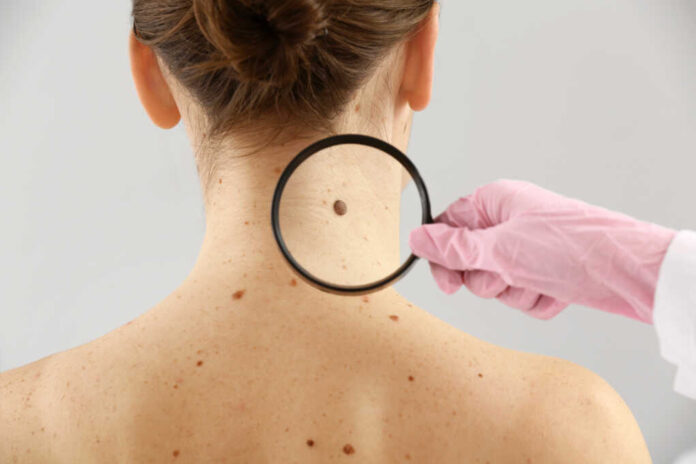
Preparing properly for your skin cancer screening can be the difference between catching a potential issue early or missing it altogether.
At a Glance
- Skin cancer screenings are painless, straightforward exams that require no special preparation, though arriving with clean skin (no makeup or nail polish) allows for a more thorough examination.
- High-risk individuals—those with personal or family history of skin cancer, numerous moles, or significant sun exposure—should have annual professional screenings.
- During the exam, you’ll wear a gown for a comprehensive head-to-toe check, including areas not typically exposed to sun.
- If suspicious areas are found, biopsies can be performed the same day with results typically available within one to two weeks.
- Regular monthly self-exams complement professional screenings and help familiarize you with your skin’s normal appearance.
What to Expect During Your Screening
A skin cancer screening is a visual examination performed by a dermatologist to identify any precancerous or cancerous growths. The procedure is entirely visual and doesn’t involve machines like MRIs or CT scans. You’ll change into a medical gown, allowing the dermatologist to examine your entire body, including areas that don’t typically see sun exposure. The doctor may use a dermatoscope, a specialized magnifying tool, to better visualize skin lesions and determine if any areas need further investigation.
How to Prepare for Maximum Effectiveness
To get the most from your appointment, arrive with clean, bare skin. This means no makeup, lotions, or nail polish that could obscure potential problem areas. “It’s fine to apply products after the screening, but plan to come to see me with clean, bare skin,” advises Dr. Anisha Patel of MD Anderson Cancer Center. If you have a history of skin cancer or previous biopsies, bring these records to your appointment. This information helps your dermatologist understand your risk level and avoids repeating procedures unnecessarily.
Before your appointment, conduct a self-examination to note any areas of concern. Pay special attention to moles or spots that have changed in size, shape, or color. Make a list of these concerns to discuss with your dermatologist. The more familiar you are with your own skin, the better equipped you’ll be to notice subtle changes between professional screenings.
Who Needs Regular Screenings
Not everyone needs annual professional skin cancer screenings. If you’re at low risk with no symptoms, periodic self-exams may be sufficient. However, high-risk individuals should schedule annual professional screenings without fail. “Those at higher risk—such as individuals with a personal or family history of skin cancer, numerous moles or atypical nevi, or a history of significant sun exposure—should have annual professional screenings,” advises Dr. Shoshana Marmon. Children typically don’t need screenings unless there’s a family history of melanoma or concerning changes in moles.
If your dermatologist identifies a suspicious spot during your exam, they may recommend a biopsy. This simple procedure can usually be performed during the same appointment. A small sample of the suspicious tissue is removed and sent to a laboratory for analysis. Most biopsies don’t result in a cancer diagnosis, but having the procedure allows your doctor to rule out cancer or catch it in its earliest, most treatable stage.
After Your Screening
Following your exam, your dermatologist will provide immediate feedback about what they observed. If biopsies were taken, results typically come back within one to two weeks. Your doctor will also recommend when to return for your next screening based on your risk factors. Between professional screenings, continue monthly self-exams and practice good sun protection habits, including wearing sunscreen daily, seeking shade during peak sun hours (10 a.m. to 2 p.m.), and wearing protective clothing when outdoors.
Remember that skin cancer screenings are focused exclusively on detecting skin cancer, not addressing cosmetic concerns. Keep your appointment focused on potential health issues rather than aesthetic questions. By approaching your skin cancer screening with preparation and knowledge, you maximize its effectiveness and take an important step toward protecting your long-term health.


















